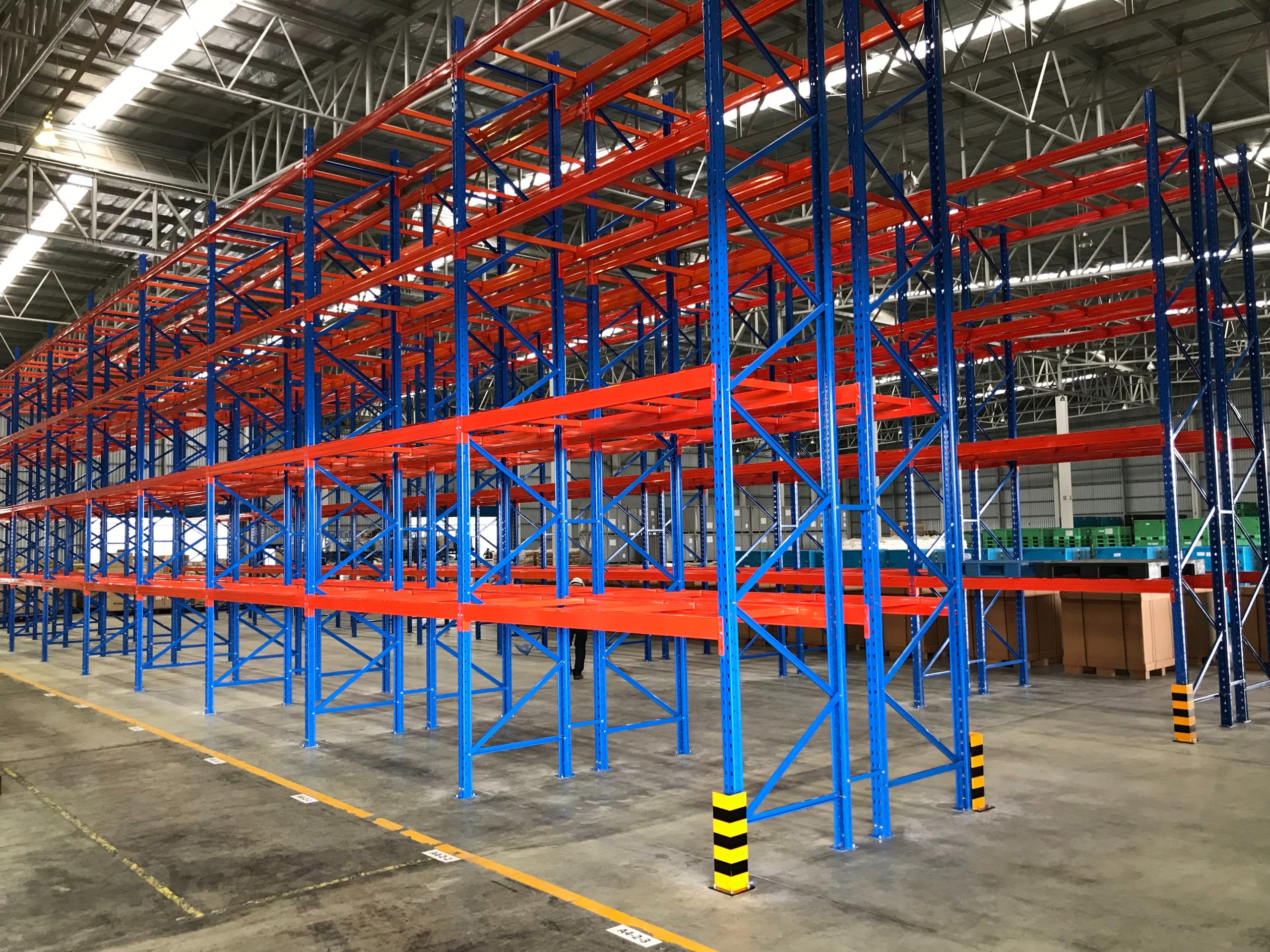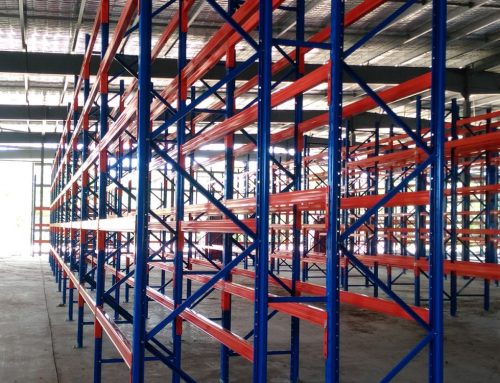Whether you are a business that uses a warehouse for stock, or a logistics company handling stock for different businesses, you need an effective pallet storage solution. There are many types to choose from, but the one you choose should reflect the specific needs of the business.
Adjustable Racking
Walk into most warehouses, and you will find walls of adjustable pallet racking. Although adjustable pallet racking is not a compact pallet storage system, it is the most common storage system for pallets. Adjustable racking offers more flexibility for warehouse storage solutions.
Adjustable pallet racking is designed to facilitate pallets from forklifts, but unlike other storage systems, adjustable racking can be changed to suit the dimensions of the cargo. The downside is that adjustable racking is not a compact system; it requires a wide surface for installation.
Very Narrow Racking
Very narrow pallet racking is a variation of adjustable racking. Very narrow racking is designed to use the warehouse space effectively over the long term. Still, very narrow racking is also convenient thanks to its narrow design. Very narrow racking increases the available workspace.
Although very narrow racking creates more space in the warehouse, narrow forklifts are still required. Very narrow pallet racking allows more raking in the warehouse, creating more density and storage capacity. Again, very narrow storage is a common and effective storage option.
Double Deep Racking
Double-deep pallet racking sits between adjustable pallet racking and compact systems. Double-deep pallet racking is designed to provide more pallet storage without sacrificing floor space in the warehouse. Additional storage is achieved by creating more space at the back.
In double-deep pallet racking, optimisation is achieved by modifying the storage capacity of the racking at the back, creating another two depths of space. However, greater capacity comes with a downside; there is a lack of access to the unit loads due to the density of the storage.
Drive in and Drive Through Compact Systems
Drive-in and compact drive-through systems can be considered some of the densest storage racking systems for warehouses. In this system, the warehouse floorspace is eliminated completely, and forklifts are driven into the racking directly, creating more density and space.
Efficiency is one of the main advantages of a drive-in system. Units can be stored densely and accessed easily with forklifts. The downside is that drove-in storage is only feasible in certain industries and with certain products. The right infrastructure is needed to make it a viable option.
Live Storage for Pallets
Live pallet storage is a fluid system that allows warehouse operators to transport loads efficiently during the day. Live storage for pallets uses large centralised storage systems that load a pallet on one side and remove it from the other. Units are tracked for their position.
Live storage for pallets is a form of FIFO system where the first pallet to be loaded is the first to be removed. The downside of these systems is the space required in the warehouse. Chances are this is not the best storage system for warehouses with limited space for storing the units.
Push Back Racking
The pushback pallet racking system is a variation of the FIFO system described above. This system is a last-in, first-out system that keeps the warehouse active, moving, and trackable. Forklifts store units at one end, and that pushes the unit to the back onto a forklift to be moved.
Pushback racking is effective because it is high-density storage which means the forklift doesn’t need to drive into the racks; it also saves space and eliminates the need for multiple aisles. On the downside, there is an inability to access all of the pallets, and the lanes are restricted to five.
Mobile Racking
Mobile racking systems are another common and effective type of pallet racking system that is used in commercial and domestic spaces. Mobile racking is a type of compact racking that uses rails to shift racks to where they are needed. Mobile racking enables lateral unit displacements.
Mobile racking is popular because it creates space and better access to units; it provides direct access to storage spaces at short distances. That said, this storage solution isn’t suitable for all warehouses; it has high initial investment costs and requires maintenance and safety checks.
Conclusion
There is no shortage of pallet racking systems to choose from, so there is no excuse not to choose the best pallet racking for your business. Whether you need a high-density solution or one that is more flexible, you can find a system that works for your business and warehouse.





